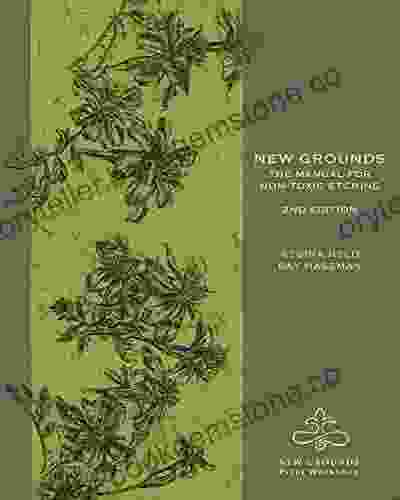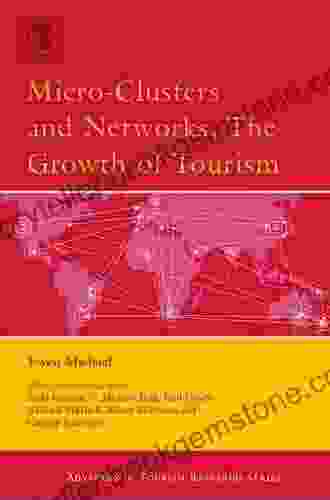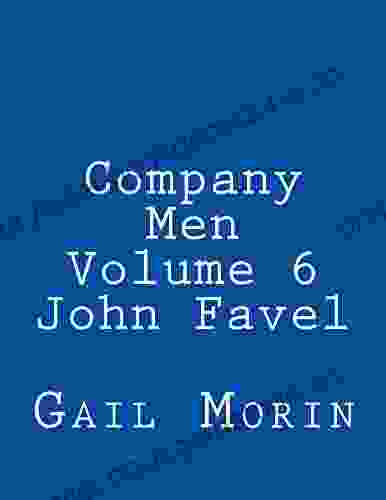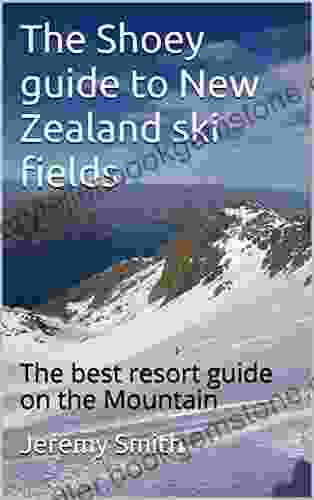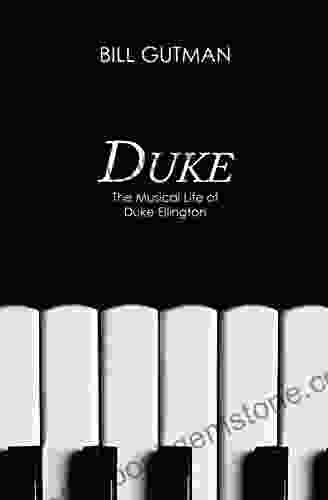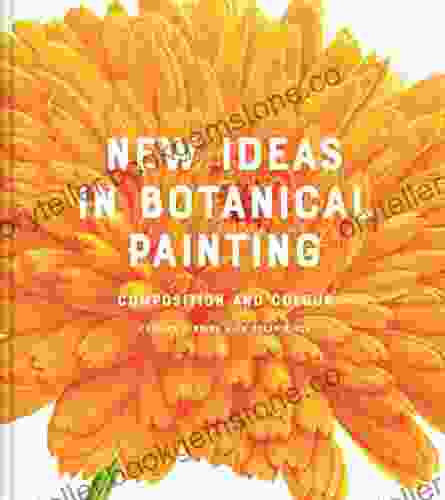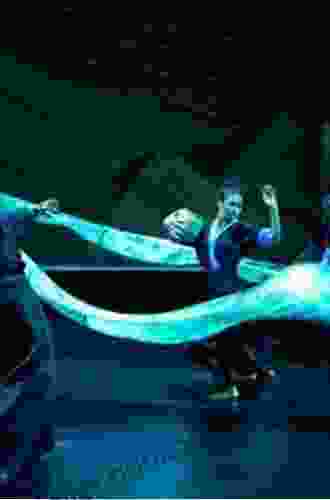New Grounds: The Manual for Non-Toxic Etching

Etching is a printmaking technique that involves creating an image on a metal plate by chemically etching away the unprotected areas. Traditionally, etching has been associated with the use of hazardous chemicals such as nitric acid and ferric chloride. However, in recent years, non-toxic alternatives to these chemicals have emerged, making it possible to practice etching in a safe and environmentally friendly way.
4.8 out of 5
| Language | : | English |
| File size | : | 2149 KB |
| Text-to-Speech | : | Enabled |
| Screen Reader | : | Supported |
| Enhanced typesetting | : | Enabled |
| Print length | : | 149 pages |
| Lending | : | Enabled |
This manual provides a comprehensive guide to non-toxic etching techniques using readily available materials. It is suitable for both beginners and advanced artists who are looking to explore the creative possibilities of etching without compromising their health or the environment.
Chapter 1: Materials and Equipment
The first step in non-toxic etching is to gather the necessary materials and equipment. The following list provides an overview of what you will need:
- Metal plates: Copper or zinc plates are the most commonly used for etching. They can be purchased from art supply stores or online retailers.
- Ground: A ground is a protective coating that is applied to the metal plate before etching. It prevents the acid from attacking the areas that are not intended to be etched. There are several different types of grounds available, including asphaltum, hard ground, and soft ground.
- Etching solution: The etching solution is the chemical that will dissolve the unprotected areas of the metal plate. There are several different non-toxic etching solutions available, including hydrogen peroxide, ferric ammonium oxalate, and sodium persulfate.
- Tools: You will need a variety of tools for etching, including a stylus, etching needles, and a burnisher. These tools can be purchased from art supply stores or online retailers.
Chapter 2: Preparing the Plate
Once you have gathered your materials and equipment, you can begin preparing the metal plate for etching. The first step is to clean the plate with soap and water. Once the plate is clean, you will need to apply a ground to it. The type of ground you use will depend on the etching technique you are using.
Asphaltum ground: Asphaltum ground is a traditional etching ground made from asphaltum, beeswax, and turpentine. It is applied to the metal plate with a brush or a roller. Once the ground has been applied, it must be heated to harden it.
Hard ground: Hard ground is a type of etching ground that is made from a mixture of beeswax, rosin, and pitch. It is applied to the metal plate with a hot plate or a heat gun. Hard ground is more resistant to acid than asphaltum ground, so it can be used for longer etching times.
Soft ground: Soft ground is a type of etching ground that is made from a mixture of beeswax and tallow. It is applied to the metal plate with a brush or a roller. Soft ground is less resistant to acid than asphaltum ground or hard ground, so it can be used for shorter etching times.
Chapter 3: Drawing on the Ground
Once the ground has been applied to the metal plate, you can begin drawing on it with a stylus or an etching needle. The stylus or needle will scratch through the ground, exposing the metal beneath. The areas that are exposed to the metal will be etched away by the acid.
When drawing on the ground, it is important to be careful not to scratch too deeply. If you scratch too deeply, the acid will etch too far into the metal and the lines will be too thick. It is also important to avoid touching the metal with your fingers, as this can transfer oils to the plate and prevent the acid from etching properly.
Chapter 4: Etching the Plate
Once you have finished drawing on the ground, you can begin etching the plate. The etching process involves immersing the plate in an etching solution. The etching solution will dissolve the unprotected areas of the metal plate, creating an image. The length of time that the plate is immersed in the etching solution will determine the depth of the etch.
There are several different types of etching solutions available, each with its own advantages and disadvantages. The most common type of etching solution is ferric chloride. Ferric chloride is relatively inexpensive and easy to use, but it can be harmful to the environment. Other types of etching solutions include hydrogen peroxide, ferric ammonium oxalate, and sodium persulfate. These solutions are more environmentally friendly than ferric chloride, but they can be more expensive and more difficult to use.
Chapter 5: Stopping the Etching Process
Once you have etched the plate for the desired amount of time, you can stop the etching process by removing the plate from the etching solution. The plate should then be rinsed with water to remove any remaining acid.
Once the plate has been rinsed, it can be dried with a hair dryer or a heat gun. The plate is now ready to be printed.
Chapter 6: Printing the Plate
To print the plate, you will need a printing press and some ink. The ink is applied to the plate with a brayer. The plate is then placed on the printing press and a piece of paper is placed on top of the plate. The paper is then pressed into the plate with the printing press.
The pressure of the printing press will transfer the ink from the plate to the paper. The resulting print will be a mirror image of the image that was etched into the plate.
Non-toxic etching is a versatile and rewarding printmaking technique that can be used to create a wide variety of images. By following the instructions in this manual, you can learn how to etch your own plates and create your own unique prints.
I hope that this manual has been helpful. If you have any questions, please feel free to contact me.
4.8 out of 5
| Language | : | English |
| File size | : | 2149 KB |
| Text-to-Speech | : | Enabled |
| Screen Reader | : | Supported |
| Enhanced typesetting | : | Enabled |
| Print length | : | 149 pages |
| Lending | : | Enabled |
Do you want to contribute by writing guest posts on this blog?
Please contact us and send us a resume of previous articles that you have written.
 Best Book
Best Book Page Flip
Page Flip Bookshelf
Bookshelf Literary loom
Literary loom Chapter
Chapter Bookish
Bookish PageTurner
PageTurner Bibliophile
Bibliophile Story
Story Inkwell
Inkwell Bookworm
Bookworm Labyrinth
Labyrinth Plot Twist
Plot Twist Prose
Prose Paperback
Paperback Storyteller
Storyteller Sanctuary
Sanctuary Fiction
Fiction Reading
Reading Chronicle
Chronicle Read
Read Robert Beverly Hale
Robert Beverly Hale Jun Maeda
Jun Maeda Joseph Birchall
Joseph Birchall Avery Grey
Avery Grey Arrigo Cipriani
Arrigo Cipriani Erin Eitter Kono
Erin Eitter Kono Valerie Mckeehan
Valerie Mckeehan Sheila O Flanagan
Sheila O Flanagan Jt Sawyer
Jt Sawyer Lena Grey
Lena Grey Luke Nguyen
Luke Nguyen Anton Chekhov
Anton Chekhov Anthony David
Anthony David Annette Gordon Reed
Annette Gordon Reed Morgan Rogers
Morgan Rogers Satyajit Ray
Satyajit Ray Christopher Sieving
Christopher Sieving Destiny Davis
Destiny Davis Elizabeth Friendship
Elizabeth Friendship Linda Nagata
Linda Nagata Jane Monteith
Jane Monteith Margaret Walker
Margaret Walker Emma Read
Emma Read Jaime Castle
Jaime Castle Anne Green Gilbert
Anne Green Gilbert Tay Mo Nae
Tay Mo Nae Anne Hillerman
Anne Hillerman Peter Jazwinski
Peter Jazwinski Bwwm Love
Bwwm Love Jason Louis
Jason Louis B Russell Mcconkie
B Russell Mcconkie Magi Nams
Magi Nams Antonis Tsagaris
Antonis Tsagaris Ansel Adams
Ansel Adams Anton Roux
Anton Roux Edgar Degas
Edgar Degas Jay Caspian Kang
Jay Caspian Kang Mimi Kwa
Mimi Kwa Charles Taliaferro
Charles Taliaferro Claire Devarrieux
Claire Devarrieux Pico Iyer
Pico Iyer Noy
Noy Anwei Skinsnes Law
Anwei Skinsnes Law Anne Frank
Anne Frank Ashley Jaquavis
Ashley Jaquavis Zalmay Khalilzad
Zalmay Khalilzad Arthur H Buckley
Arthur H Buckley Deborah D Douglas
Deborah D Douglas Jodi Ohl
Jodi Ohl Kristen Ashley
Kristen Ashley Mackinley Helm
Mackinley Helm Steven Bradley
Steven Bradley Eric Campbell
Eric Campbell Binka Le Breton
Binka Le Breton Martin Kemp
Martin Kemp Frank Conroy
Frank Conroy Cynthia Winton Henry
Cynthia Winton Henry Donald Murray
Donald Murray Detlev Henschel
Detlev Henschel Phil Doran
Phil Doran Jan Morris
Jan Morris Mary Maccracken
Mary Maccracken Karen A Romanko
Karen A Romanko Blackhorse Mitchell
Blackhorse Mitchell Jesse Martin
Jesse Martin Katja Pantzar
Katja Pantzar Debbie Macomber
Debbie Macomber W A Bentley
W A Bentley Bob Mayer
Bob Mayer Jane Yolen
Jane Yolen Haruki Murakami
Haruki Murakami Elizabeth David
Elizabeth David Carolyn Jenkins
Carolyn Jenkins Valerie Biden Owens
Valerie Biden Owens Anton Hager
Anton Hager Annie Keary
Annie Keary Paul Brinkley Rogers
Paul Brinkley Rogers Juliette Sobanet
Juliette Sobanet Pearl Howie
Pearl Howie Doug Peterson
Doug Peterson Anne Morrow Lindbergh
Anne Morrow Lindbergh Ken Seeroi
Ken Seeroi B Ruby Rich
B Ruby Rich Talia Beckett
Talia Beckett Approach Guides
Approach Guides Woody Allen
Woody Allen Lydia Wilen
Lydia Wilen Chloe Fox
Chloe Fox Peter F Hamilton
Peter F Hamilton Steven M Nolt
Steven M Nolt Mary Renault
Mary Renault D Levesque
D Levesque Joan Tollifson
Joan Tollifson Colby Buzzell
Colby Buzzell James Rosone
James Rosone Arthur Miller
Arthur Miller Hanife Hassan O Keeffe
Hanife Hassan O Keeffe Zharel Anger
Zharel Anger S C Jensen
S C Jensen John Woolf
John Woolf Michael Fleishman
Michael Fleishman Kyunghee Pyun
Kyunghee Pyun Anne Manera
Anne Manera Julian Stallabrass
Julian Stallabrass Brian W Smith
Brian W Smith Avanti Centrae
Avanti Centrae Leokadia Schmidt
Leokadia Schmidt Jeffrey Vonk
Jeffrey Vonk Wakefield Poole
Wakefield Poole John E Siers
John E Siers Chris Saper
Chris Saper Sari Botton
Sari Botton Tracy Franz
Tracy Franz Robert Graysmith
Robert Graysmith W Michael Blumenthal
W Michael Blumenthal Robert Dugoni
Robert Dugoni Anne Sebba
Anne Sebba Bella Martin
Bella Martin Artemisia Gentileschi
Artemisia Gentileschi Michael Kimmelman
Michael Kimmelman Ernst Lehner
Ernst Lehner Asali Solomon
Asali Solomon Michael Tucker
Michael Tucker John Scarne
John Scarne George Bird Grinnell
George Bird Grinnell Sonia Misra
Sonia Misra Bill White
Bill White Michael Jan Friedman
Michael Jan Friedman Hannah Arendt
Hannah Arendt Stewart James
Stewart James John Izbicki
John Izbicki Colin Angus
Colin Angus Ariana Godoy
Ariana Godoy Ashley Antoinette
Ashley Antoinette Ava Archer
Ava Archer Sue Miller
Sue Miller Annemarie Strehl
Annemarie Strehl Tara Wells
Tara Wells Tony Randgaard
Tony Randgaard Doris Marjorie Moore
Doris Marjorie Moore Ashleynicole
Ashleynicole Barbara Demarco Barrett
Barbara Demarco Barrett Arthur Murray
Arthur Murray M N Forgy
M N Forgy Richard Killeen
Richard Killeen B V Larson
B V Larson Beth Haslam
Beth Haslam Edward Achorn
Edward Achorn Asaf Messerer
Asaf Messerer Jose Antonio Salgado Alonso
Jose Antonio Salgado Alonso Ashlee Vance
Ashlee Vance Kao Kalia Yang
Kao Kalia Yang Elizabeth Bard
Elizabeth Bard T R Todd
T R Todd Tim Downs
Tim Downs S H Jucha
S H Jucha Lonely Planet
Lonely Planet Yasmin Angoe
Yasmin Angoe Aziz Shihab
Aziz Shihab Atsons
Atsons Beverly Galeskas
Beverly Galeskas Laurence Oliphant
Laurence Oliphant Antonia Fraser
Antonia Fraser R A Lafferty
R A Lafferty Lizzie Williams
Lizzie Williams Apsley Cherry Garrard
Apsley Cherry Garrard Betty Reynolds
Betty Reynolds Anne Mccaffrey
Anne Mccaffrey Mark Edward Harris
Mark Edward Harris Joan Bess
Joan Bess Julie Nelson Davis
Julie Nelson Davis Jay Boyce
Jay Boyce Lorraine Caputo
Lorraine Caputo Nick Cole
Nick Cole Aubrey A Jones
Aubrey A Jones R G Collingwood
R G Collingwood Dirk Hayhurst
Dirk Hayhurst Tracy Birdsall
Tracy Birdsall Kirsten Anderson
Kirsten Anderson Jasper T Scott
Jasper T Scott Prenisha Aja
Prenisha Aja Jim Steinmeyer
Jim Steinmeyer Mark Baskinger
Mark Baskinger Antony Kamm
Antony Kamm David Larocca
David Larocca Gina Rossi Armfield
Gina Rossi Armfield Carl Stubblefield
Carl Stubblefield Pankaj Mishra
Pankaj Mishra Jan Cohen Cruz
Jan Cohen Cruz Darby English
Darby English August Wilson
August Wilson Arthur C Danto
Arthur C Danto Anthony M Amore
Anthony M Amore Annemieke Mein
Annemieke Mein Blaze Ward
Blaze Ward David E Stannard
David E Stannard Nicole Casey
Nicole Casey Anne Rice
Anne Rice Ursa Dax
Ursa Dax Arthur C Clarke
Arthur C Clarke Nancy Nicholson
Nancy Nicholson Franklin Horton
Franklin Horton Riva Lehrer
Riva Lehrer Carne Griffiths
Carne Griffiths Marlene Wagman Geller
Marlene Wagman Geller Brendan Edwards
Brendan Edwards Rebecca Kaye
Rebecca Kaye Bernadette Murphy
Bernadette Murphy Jacqueline Rayner
Jacqueline Rayner Catherine E Mckinley
Catherine E Mckinley Antoinette Nora Claypoole
Antoinette Nora Claypoole Laurel Ann Francis
Laurel Ann Francis Meyer Berger
Meyer Berger Arielle Eckstut
Arielle Eckstut Clare Therese Gray
Clare Therese Gray John H Groberg
John H Groberg Scott M Madden
Scott M Madden Eric Broudy
Eric Broudy Christine Denniston
Christine Denniston James Maskalyk
James Maskalyk Waldo Rodriguez
Waldo Rodriguez Vernor Vinge
Vernor Vinge Haben Girma
Haben Girma Annette Dozier
Annette Dozier Pat Cadigan
Pat Cadigan Clive Hallett
Clive Hallett Axel Hacke
Axel Hacke Jonathan Strahan
Jonathan Strahan Arlo Adams
Arlo Adams Marta Mcdowell
Marta Mcdowell Nora Roberts
Nora Roberts Patricia Williams
Patricia Williams Francesca Fiorani
Francesca Fiorani Scott Hughey
Scott Hughey Ron Stocke
Ron Stocke Art Wolfe
Art Wolfe Christopher Griffin
Christopher Griffin David Consuegra
David Consuegra Vanessa Hua
Vanessa Hua Arthur Conan Doyle
Arthur Conan Doyle N L Hudson
N L Hudson Chawadee Nualkhair
Chawadee Nualkhair Walt Bachman
Walt Bachman Howard Dully
Howard Dully Armin Weber
Armin Weber Ariel Dorfman
Ariel Dorfman Billy Connolly
Billy Connolly Kevin Mannens
Kevin Mannens John A Crespi
John A Crespi Austin Howe
Austin Howe Benjamin Percy
Benjamin Percy Tamron Hall
Tamron Hall Laura Davis Chanin
Laura Davis Chanin Sara Paretsky
Sara Paretsky Miss Jenesequa
Miss Jenesequa Linda Furiya
Linda Furiya Wade Motawi
Wade Motawi Anthony M Strong
Anthony M Strong Ruth Wariner
Ruth Wariner Myrnoska Scott
Myrnoska Scott Ashley Bristowe
Ashley Bristowe Heather Vogel Frederick
Heather Vogel Frederick Brian Butko
Brian Butko Keller Easterling
Keller Easterling Doug Scott
Doug Scott Rebecca Serle
Rebecca Serle Anthony Ryder
Anthony Ryder Paul Holt
Paul Holt Pat Hall
Pat Hall Ayn Rand
Ayn Rand Tony Peak
Tony Peak Howling Moon Books
Howling Moon Books Anne Keenan Higgins
Anne Keenan Higgins King Ellie
King Ellie B B Thatcher
B B Thatcher Kim Knox
Kim Knox Anne Moody
Anne Moody Eric Warren
Eric Warren Philip Tyler
Philip Tyler Arnold Rampersad
Arnold Rampersad Suzanne Fredericq
Suzanne Fredericq Joseph Mcbride
Joseph Mcbride Beata Lubas
Beata Lubas Jay Allan
Jay Allan Michael Betancourt
Michael Betancourt Kris Jenner
Kris Jenner Joseph Wambaugh
Joseph Wambaugh Anthony Ryan
Anthony Ryan Edgar Rice Burroughs
Edgar Rice Burroughs Shonda Buchanan
Shonda Buchanan Nancy Lee Mccaskill
Nancy Lee Mccaskill Graham Fraser
Graham Fraser Chris Cozen
Chris Cozen Kathy Kolbe
Kathy Kolbe Karen Mccartney
Karen Mccartney Madeleine Walker
Madeleine Walker Dennic Chunman Lo
Dennic Chunman Lo Caroline Montague
Caroline Montague Eugenio Barba
Eugenio Barba Ashley Mahlberg
Ashley Mahlberg Nicholas Sansbury Smith
Nicholas Sansbury Smith Pamela Cutter
Pamela Cutter Obed Silva
Obed Silva Gene D Phillips
Gene D Phillips Dave Bartell
Dave Bartell Anthony Slide
Anthony Slide Kindle Edition
Kindle Edition Smauggy Universe
Smauggy Universe Ashley Fiolek
Ashley Fiolek Rivers Solomon
Rivers Solomon Ray Bradbury
Ray Bradbury Xiaolu Guo
Xiaolu Guo Ari Seth Cohen
Ari Seth Cohen Fig Taylor
Fig Taylor James D Umbach
James D Umbach Diana Kupershmit
Diana Kupershmit Maria Venegas
Maria Venegas David Deal
David Deal Charles Nordhoff
Charles Nordhoff Anne De Courcy
Anne De Courcy Jason Frye
Jason Frye Oscar Zeta Acosta
Oscar Zeta Acosta Rosemary Sullivan
Rosemary Sullivan Gloria Mattioni
Gloria Mattioni Yuk Hui
Yuk Hui Jane Sullivan
Jane Sullivan Anton Tekshin
Anton Tekshin John Davidson
John Davidson Tim Gunn
Tim Gunn Jan Murphy
Jan Murphy Maxine Leeds Craig
Maxine Leeds Craig Jean Guerrero
Jean Guerrero Deborah Paris
Deborah Paris Avery Blake
Avery Blake Chris Weyers
Chris Weyers Tony Hillerman
Tony Hillerman Arielle Silverman Ph D
Arielle Silverman Ph D Sadhna Shanker
Sadhna Shanker Sarah Vallance
Sarah Vallance Scott Westerfeld
Scott Westerfeld Wesley B Turner
Wesley B Turner Regina Held
Regina Held Samantha Hahn
Samantha Hahn Tia Williams
Tia Williams Janet Farnsworth
Janet Farnsworth Maureen T Corrigan
Maureen T Corrigan Ashley Brantley
Ashley Brantley Geoff Schumacher
Geoff Schumacher Anthony C Winkler
Anthony C Winkler Austin Channing Brown
Austin Channing Brown Anne Richardson Williams
Anne Richardson Williams Karl Ove Knausgaard
Karl Ove Knausgaard Lorna Luft
Lorna Luft Chris A Norton
Chris A Norton Fifi O Neill
Fifi O Neill Elena M Watson
Elena M Watson Vladimir London
Vladimir London Lou Sutton
Lou Sutton George Rathmell
George Rathmell Oliver Mayes
Oliver Mayes John H Clark Iii
John H Clark Iii Anthony Jones
Anthony Jones Koji A Dae
Koji A Dae Stephen Moss
Stephen Moss De Andrea
De Andrea Margaret Scott
Margaret Scott Arleta Pech
Arleta Pech Armine Von Tempski
Armine Von Tempski Annette Insdorf
Annette Insdorf Martin Cruz Smith
Martin Cruz Smith Lian Hearn
Lian Hearn Kim Erwin
Kim Erwin Michael Chatfield
Michael Chatfield Rob Schmitz
Rob Schmitz Peter Watts
Peter Watts Gayatri Gopinath
Gayatri Gopinath Sarah Crafts
Sarah Crafts Patrick Rothfuss
Patrick Rothfuss New Edition Kindle Edition
New Edition Kindle Edition Richard Pikesley
Richard Pikesley Anthony J Melchiorri
Anthony J Melchiorri Anthony James
Anthony James Angela Y Davis
Angela Y Davis Annemarie Bean
Annemarie Bean Scott Lerman
Scott Lerman Elise Darcy
Elise Darcy Kalyn Franke
Kalyn Franke Annette Freeman
Annette Freeman Berlitz Publishing
Berlitz Publishing Christopher Simmons
Christopher Simmons Peter Turchi
Peter Turchi Mary Kay Ricks
Mary Kay Ricks Shami Stovall
Shami Stovall Paul Steinberg
Paul Steinberg H Dolmetsch
H Dolmetsch George Huppert
George Huppert Todd Barry
Todd Barry Annette Kowalski
Annette Kowalski J R Osborn
J R Osborn Jennifer Homans
Jennifer Homans Olive Collins
Olive Collins Kaitlyn Greenidge
Kaitlyn Greenidge Bear Heart
Bear Heart Mary Ann Scott
Mary Ann Scott Rebecca Keegan
Rebecca Keegan Shugri Said Salh
Shugri Said Salh Sarah Winnemucca Hopkins
Sarah Winnemucca Hopkins Saeed Jones
Saeed Jones Michael Evamy
Michael Evamy Eileen Mcnamara
Eileen Mcnamara Thomas M Hill
Thomas M Hill Cathy Curtis
Cathy Curtis Gail Morin
Gail Morin Jason Waguespack
Jason Waguespack Colonial Williamsburg Foundation
Colonial Williamsburg Foundation John Triptych
John Triptych Annie Ernaux
Annie Ernaux Pamela Des Barres
Pamela Des Barres Matthew Jm Carpenter
Matthew Jm Carpenter Quentin Tarantino
Quentin Tarantino Lutishia Lovely
Lutishia Lovely Robert D Kaplan
Robert D Kaplan Arne Dehli
Arne Dehli Owen Jones
Owen Jones Tiffany Roberts
Tiffany Roberts Stephan Talty
Stephan Talty Fergal Keane
Fergal Keane Anton Treuer
Anton Treuer Davida Schulman
Davida Schulman Michael Frank
Michael Frank Anne Lister
Anne Lister Nathan Deuel
Nathan Deuel Joan Baxter
Joan Baxter Anthea Sharp
Anthea Sharp Ashley K Stoyanov Ojeda
Ashley K Stoyanov Ojeda Ar Corbin
Ar Corbin Karen Ordahl Kupperman
Karen Ordahl Kupperman Matthew A Goodwin
Matthew A Goodwin Robert V Camuto
Robert V Camuto Arthur Bartow
Arthur Bartow Asimina Nteliou
Asimina Nteliou Joe Russo
Joe Russo Tim Z Hernandez
Tim Z Hernandez Robert J Serling
Robert J Serling Joe Abercrombie
Joe Abercrombie Br Kingsolver
Br Kingsolver Zeneba Bowers
Zeneba Bowers Marina Garone Gravier
Marina Garone Gravier Peter James West
Peter James West Nnedi Okorafor
Nnedi Okorafor Tamar Diana Wilson
Tamar Diana Wilson
Light bulbAdvertise smarter! Our strategic ad space ensures maximum exposure. Reserve your spot today!
 Stephen FosterFollow ·11.4k
Stephen FosterFollow ·11.4k Felix HayesFollow ·6.7k
Felix HayesFollow ·6.7k Haruki MurakamiFollow ·6.3k
Haruki MurakamiFollow ·6.3k Isaac BellFollow ·13.4k
Isaac BellFollow ·13.4k Devon MitchellFollow ·17.9k
Devon MitchellFollow ·17.9k George R.R. MartinFollow ·13.8k
George R.R. MartinFollow ·13.8k Dan HendersonFollow ·16.7k
Dan HendersonFollow ·16.7k Lucas ReedFollow ·17.1k
Lucas ReedFollow ·17.1k
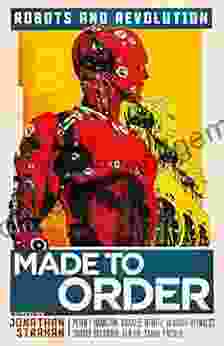
 Braden Ward
Braden WardMade to Order Robots and the Coming Revolution
Robots are becoming increasingly common...
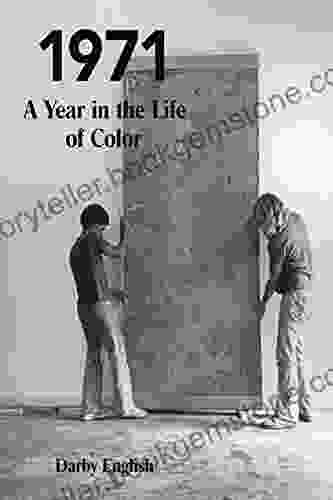
 Clay Powell
Clay Powell1971: A Year in the Life of Color
The year 1971 was a pivotal one for color....
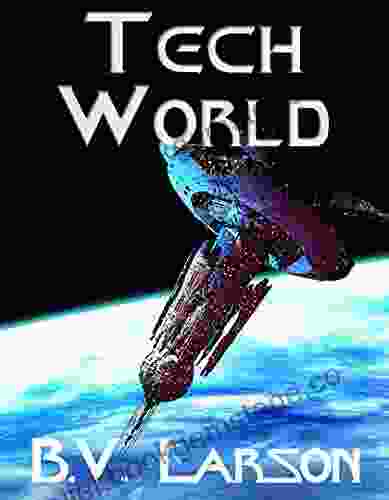
 Ralph Waldo Emerson
Ralph Waldo EmersonTech World's Undying Mercenaries: A Deep Dive into the...
In the ever-evolving landscape of the...
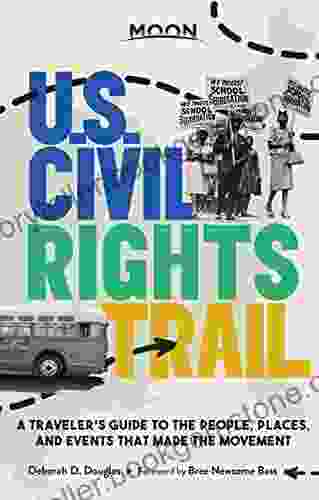
 Wade Cox
Wade CoxThe Ultimate Traveler's Guide to the People, Places, and...
Travel has always been a part of the human...
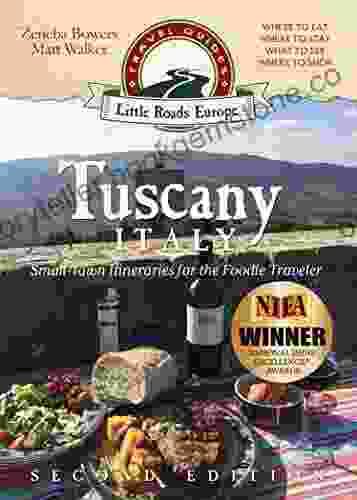
 Evan Simmons
Evan SimmonsA Comprehensive Guide: Uncovering Small Town Culinary...
: A Culinary Odyssey Beyond the City...
4.8 out of 5
| Language | : | English |
| File size | : | 2149 KB |
| Text-to-Speech | : | Enabled |
| Screen Reader | : | Supported |
| Enhanced typesetting | : | Enabled |
| Print length | : | 149 pages |
| Lending | : | Enabled |


